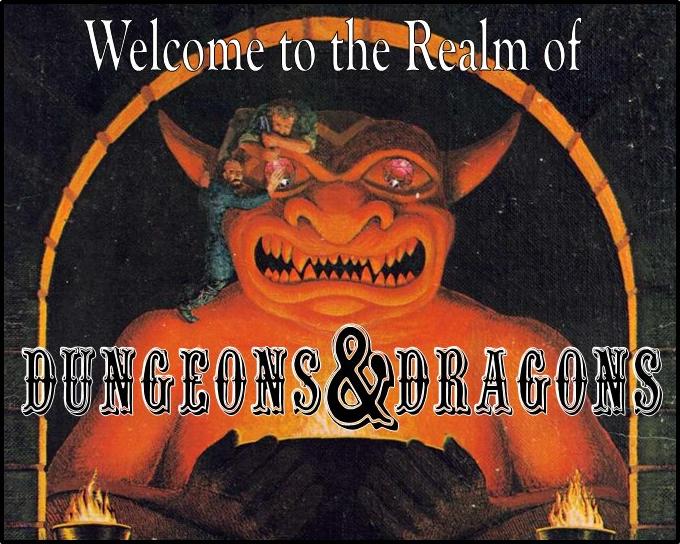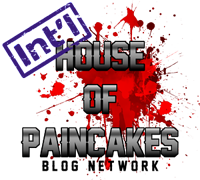Tuesday 17 November 2009
A Different Way of Looking at Skills in C&C
This would still allow (for example) a Fighter to attempt to pick a lock - he just won't have much of a chance of succeeding.
Rather than have a long static list of skills, the players should choose skills that fit their character concept and (with the help of their Castle Keeper/Dungeon Master) come up with their own list of skills and their descriptions.
Skills would still (sort of) have levels – and these levels are ‘rated’ like any characters attributes - Tertiary (the lowest skill level), Secondary (average skill level), and Primary (the highest skill level).
Like class skills, the character applies any appropriate attribute bonus to the task at hand -strength when shoeing a horse, or dex when making a horse-shoe – both would be considered to come under the skill heading of blacksmithing, but you would require strength for one and manual dexterity for the other. But unlike class skills, you don't add your class level in a 'straight' manner.
Primary skills get a +1 bonus per level, Secondary gets +1/2 levels, and Tertiary gets a +1 bonus per 3 levels.
Your base challenge rating is determined by skill 'level' – level 3/Primary = 12, level 2/Secondary = 15, and level 1/Tertiary = 12.
The Number of slots a Character has for his Secondary Skills are equal to the Characters (INT+WIS), + Characters Starting Age/10 (another advantage for most Non-Humans).
What levels your skills start at is dependent upon how many skill points you have, and how you spend them.
Level = Cost
1/Tertiary = 1 point
2/Secondary = 3 points
3/Primary = 6 points
For example, Brother Kydric has 26 ‘Slots’ to spend on his Secondary Skills – and he decides to spend 6 Slots on Healing. Giving him the Healing secondary skill at Level 3/Primary, his base challenge difficulty for all tests involving his Healing secondary skill is set at 12.
A Character gains Secondary Skill points at every ‘Odd’ level (3rd, 5th, 7th and so on), the points he gains are equal to his Int or Wis attribute modifier (whichever is higher) +1 (with a minimum of 1).
To make the check, the character performing the skill simply rolls a d20 and adds his appropriate modifiers - the difficulty is set by his skill level (either 12, 15, or 18) plus any challenge rating added by his CK/DM.
So if a character is level three, has a dexterity of 15 (the appropriate attribute in this example), and his skill level is 3/Primary – when using the Weapon Smith secondary skill they are allowed a +4 to their roll.
In some instances the use of skills causes another to make a saving throw. In this case, the character, monster or non-player character makes a saving throw but modifies the roll by a -1 for each level of skill the character has. This is also adjusted further for any attribute modifiers. When a saving throw is called for, the character’s level or monsters hit dice also affect the roll.
Furthermore, there are always circumstances than need some modification beyond that mentioned above.
Unusual circumstances, the weather and pure chance can come into play to effect the chances of success. In addition, the difficulty of the situation adjusts the roll.
Keep Rollin'
Saturday 7 November 2009
The Malevolent Mana Muncher
In our AD&D hey-day it wasn't a problem, all the DM's in my area pretty much knew each other and there was little or no concern or suspicion.
One of the better ways to deal with such a Player comes from "Booty and the Beasts", if you read my blog you will know I am working my way through that tome converting things over to C&C (I might even do a PDF of it when its all finished) and today I am 'blogging' the Malevolent Mana Muncher from BatB - and this little critter is a GREAT way of dealing with the too many Magic Items problem (even if you caused it yourself).
MALEVOLENT MANA-MUNCHER
NO. ENCOUNTERED: 1–4
SIZE: Medium
HD: 11
MOVE: 70 ft
AC: 20
ATTACKS: 1 (snatch item)
SPECIAL: Super fast (+5 to initiative), resistant to magical blasts & explosions
SAVES: P+M
INT: Non
ALIGNMENT: Neutral
TYPE: Aberration
TREASURE: None
XP: 2100+16 per HP
These irritating little beasties are totally inoffensive to other creatures they might encounter – beyond their driving desire to steal and devour magical items as they feed off the magical energy that is stored within them.
Mana munchers are surprisingly fast, and their 3 extremely dextrous tentacles can snatch off any loosely held item (amulet, crown, brooch, etc.) on a roll of 6+ on a d20. Once it has an item, it then stuffs it into its frothing innards, any item a mana muncher attempts to digest in this manner must make a save vs. acid and being crushed – as the mana muncher chomps down on the item and attempts to digest it.
A mana muncher suffers no ill effects from exploding staves, wands, and the like – as it feeds off the magic such explosions produce.
If a mana muncher attempts to grasp a firmly held item – such as a staff, sword, or ring – and is successful in its roll, the target of the munchers attack must make a strength test or lose a hold of said item.
Mana munchers only snatch magical items, leaving all mundane gear alone.
These annoying creatures are encountered in groups of 1-4 individuals, and are generally found rummaging through old temples and ruins.
Keep Rollin'
Thursday 5 November 2009
Varying your Monsters
Do you use totally random tables and end up with a totally unplayable mess, or do you tweak monsters in minor ways so they look different - or do you simply put your own 'twists' on them.
I personally put twists on existing monsters - I've even had self-replicating Zombies; a variation on the old Fiend Folio Coffer Corpse - but in this case the Zombie 'dies', and as it hits the ground it bubbles and splits open producing two new Zombies to fight (beware of destroying undead with a Turning in my games Lol) - but in todays Blog I shall detail the Fire Troll.
Fire Trolls look like regular AD&D Trolls (or River Trolls in C&C) but with a dark rust coloured hide. They are generally found in hot arid environments, such as deserts or near volcanic activity - they like the heat. When found in the service of another, they are always provided with a method of heating their lair - either by mundane or magical means, its always very hot. The DM should double the effects of fatigue on a PC when fighting in a Fire Trolls lair.
Fire Trolls do not regenerate in the normal way, so they are not as vulnerable to attacks from Fire and Acid. In fact fire causes them to actually heal damage, any damage would be normally caused by a fire based attack (even magical fire) should be counted as healing instead.
If a Fire Troll takes a hit from an edged or piercing weapon it starts to bleed, once a Fire Trolls blood hits the air it becomes flamable - and you should keep a track of how much damage the troll has taken in this way. Each round after it first takes damage, roll a D20 - if it is equal or less than the damage the Fire Troll has taken it explodes doing 8D6 Damage to those within 10 feet of it (save to half damage) - obviously the Fire Troll is now dead and poses no further threat to the Party.
Fire Troll XP - 900 + 12 per Hit Point
Keep Rollin'



